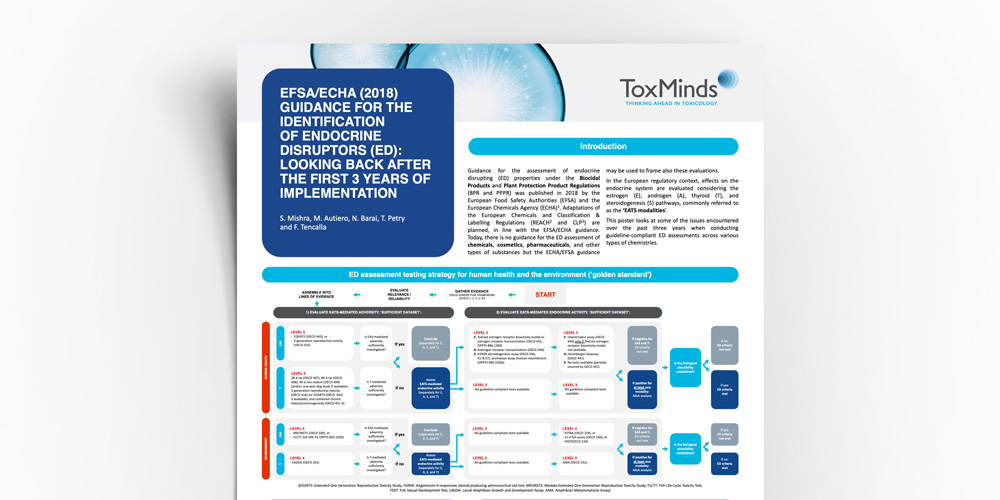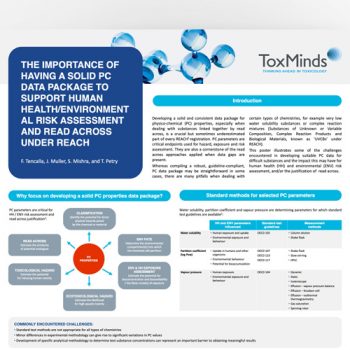EFSA/ECHA (2018) guidance for the identification of endocrine disruptors (ED): looking back after the first 3 years of implementation

Guidance for the assessment of endocrine disrupting (ED) properties under the Biocidal Products and Plant Protection Product Regulations (BPR and PPPR) was published in 2018 by the European Food Safety Authorities (EFSA) and the European Chemicals Agency (ECHA)1. Adaptations of the European Chemicals and Classification & Labelling Regulations (REACH2 and CLP3) are planned, in line with the EFSA/ECHA guidance. Today, there is no guidance for the ED assessment of chemicals, cosmetics, pharmaceuticals, and other types of substances but the ECHA/EFSA guidance may be used to frame also these evaluations.
In the European regulatory context, effects on the endocrine system are evaluated considering the estrogen (E), androgen (A), thyroid (T), and steroidogenesis (S) pathways, commonly referred to as the ‘EATS modalities’.
This poster looks at some of the issues encountered over the past three years when conducting guideline-compliant ED assessments across various types of chemistries.



